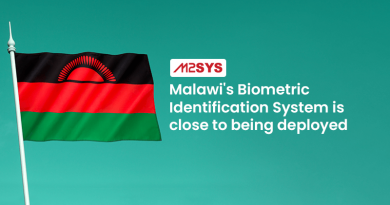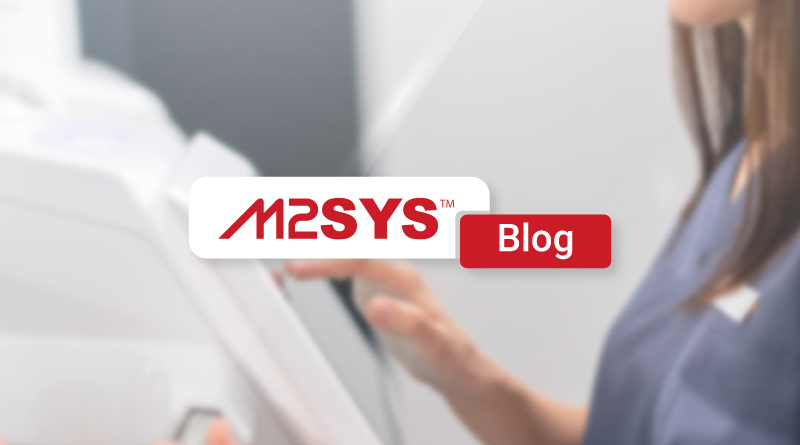Public Safety Reimagined: How Unified Data and Digital Grievance Systems Boost Efficiency
Fragmented data systems cause significant delays in emergency responses, hindering quick action during crises. By unifying data and digitizing grievance systems, agencies can improve operations, reduce response times, and rebuild public trust. Integrated platforms enhance decision-making and resource allocation, benefiting both citizens and government agencies.
TL;DR
- Fragmented data systems cause significant delays in emergency responses, hindering public safety efforts.
- Unified data platforms enhance situational awareness and resource allocation, reducing incident resolution times by 30%.
- Digital grievance systems streamline complaint handling, improving efficiency and citizen trust.
- Automation in grievance processes reduces errors and administrative burdens, fostering transparency and accountability.
- Platforms like M2SYS eGov offer integrated solutions for data management and grievance automation, enhancing government operations.
- Adopting these systems leads to long-term benefits, including faster crisis management and improved public satisfaction.
Discover how M2SYS can transform your agency's operations. Contact us today to learn more about our solutions.
Did you know that fragmented data systems cause up to 40% of delays in emergency responses, according to recent studies from the Department of Homeland Security? Government agencies often struggle with this reality, where law enforcement, fire departments, and health services operate in silos. This setup hinders quick action during crises, leaving teams without full pictures of unfolding events. Meanwhile, citizens face hurdles when reporting issues, as manual processes bury complaints in paperwork and slow resolutions. However, by unifying data and digitizing grievance systems, agencies can sharpen their operations and rebuild trust with the public.
What Challenges Do Fragmented Data Systems Create for Public Safety?
Picture a major city dealing with a natural disaster. Emergency teams from different agencies scramble to share information, but incompatible systems block the flow. As a result, responders miss critical details, such as real-time updates on affected areas or resource availability. This disconnection not only prolongs response times but also raises risks for both citizens and first responders. In fact, reports from the Federal Emergency Management Agency highlight how such gaps contributed to inefficiencies in past events like hurricanes and wildfires. Additionally, when citizens try to file grievances about safety concerns, they often encounter outdated methods like phone calls or paper forms. These approaches lead to lost reports and frustrated communities, eroding confidence in government services. For state and federal managers, these issues compound daily, turning routine operations into logistical nightmares.
How Does Integrated Public Safety Data Management Improve Government Operations?
Unified data platforms change this dynamic by pulling information from multiple sources into one accessible hub. For example, law enforcement can instantly access emergency service logs, while regulators view compliance data without delays. This setup speeds up decision-making and enhances situational awareness. Moreover, it allows for better resource allocation, ensuring teams deploy where needed most. Studies from the National Institute of Justice show that agencies with integrated systems reduce incident resolution times by 30%. But the benefits extend beyond crises. When combined with digital grievance tools, these platforms let citizens submit reports online, track progress, and receive updates. Consequently, agencies handle complaints faster, prioritize urgent matters, and demonstrate accountability. This shift not only cuts administrative burdens but also strengthens community ties, as people see their concerns addressed promptly.
Why Do Manual Grievance Processes Hurt Citizen Trust and Agency Efficiency?
Traditional grievance handling relies on manual entry and follow-ups, which often result in backlogs. A citizen reporting a safety hazard might wait weeks for acknowledgment, leading to dissatisfaction and repeat complaints. In turn, agencies waste time sifting through disorganized records, diverting staff from core duties. Data from the Government Accountability Office reveals that such inefficiencies cost billions annually in lost productivity. Furthermore, without automation, errors creep in, like misplaced files or overlooked details. These problems amplify during high-volume periods, such as after public events or disasters. Yet, by moving to digital systems, agencies can automate tracking and notifications, ensuring nothing falls through the cracks. This approach fosters transparency, as citizens gain visibility into resolution steps, rebuilding faith in public institutions.
Can Unified Systems and Automation Solve These Public Safety Bottlenecks?
Yes, and the key lies in platforms that connect data while streamlining workflows. For instance, integrating safety databases across agencies enables real-time sharing, cutting down on miscommunications. At the same time, automated grievance tools categorize and route complaints efficiently, reducing manual labor. Agencies that adopt these methods report higher satisfaction rates and lower operational costs. A case in point is the City of Columbia in South Carolina, where streamlined systems improved workforce tracking and reduced administrative waste across government offices. Similarly, in Las Vegas, digital access management for public services cut costs and boosted user experiences for thousands of residents. These examples show how integration leads to practical gains, from faster responses to better resource use.
How M2SYS eGov Platform Addresses Integrated Public Safety Data Management in Government
With over 20 years of working with governments worldwide and in the US, M2SYS brings proven approaches to these challenges. The M2SYS eGov platform serves as a base for building and delivering eGovernance solutions that unify data and automate processes. It links multi-agency databases seamlessly, allowing real-time access while maintaining tight security for sensitive information. For grievance handling, it automates workflows, from submission to resolution, without needing heavy development work. Government teams use its low-code tools to customize applications quickly, adapting to specific needs like emergency coordination or citizen reporting. This means shorter deployment times and lower costs compared to traditional methods. In projects like Nigeria’s nationwide registration, similar integrations managed vast data sets securely, preventing fraud and ensuring compliance. Back in the US, efforts in South Carolina optimized operations across dozens of offices, proving the platform’s value in real-world settings. As a result, agencies achieve smoother operations and higher public satisfaction.
What Are the Long-Term Benefits of Adopting Unified Data and Digital Grievance Systems?
Over time, these systems lead to fewer errors and faster crisis management, saving lives and resources. Agencies gain full visibility into patterns, such as recurring safety issues, enabling proactive measures. For citizens, quicker resolutions mean stronger engagement and trust. Market trends, including rising demands for digital services post-pandemic, underscore the need for such tools. Reports from Gartner indicate that governments investing in integration see 25% improvements in efficiency. By addressing pain points like data silos and manual processes, managers position their agencies for sustained success. If your team faces these hurdles, exploring platforms like M2SYS eGov can provide the tools to build effective solutions. Learn more about how it supports Digital Governance to drive real change.
Frequently Asked Questions
- What are the main challenges caused by fragmented data systems in public safety?
- Fragmented data systems create communication barriers among agencies such as law enforcement, fire departments, and health services, leading to delayed responses. This disconnection complicates the flow of crucial information during emergencies, increases risks, and contributes to inefficiencies, as noted by the Federal Emergency Management Agency in past events like hurricanes and wildfires.
- How do integrated public safety data management systems improve government efficiency?
- Integrated systems streamline operations by unifying data from various sources, allowing for improved decision-making, faster resource allocation, and enhanced situational awareness. Agencies with these systems see up to a 30% reduction in incident resolution times according to the National Institute of Justice. Furthermore, they facilitate better citizen engagement via digital grievance tools. For further insights, read our article on Digital Governance: Transforming Citizen Services.
- Why do manual grievance processes undermine citizen trust and agency efficiency?
- Manual processes result in backlogs and errors due to misplaced or overlooked details, delaying response times and leading to citizen dissatisfaction. Digitizing these processes with platforms like M2SYS eGov can automate workflows and improve transparency and efficiency. Learn more about reducing the e-Governance project lifecycle with the M2SYS eGov Platform.
- Can unified systems and automation solve public safety bottlenecks?
- Yes, unified systems that connect databases across agencies enable real-time information sharing, reducing miscommunications. Automated tools further enhance efficiency by effectively categorizing and routing grievances, as demonstrated by cities such as Columbia, South Carolina. Discover more about enhancing digital government services here.








